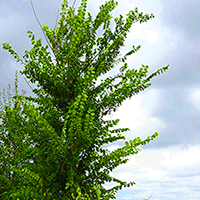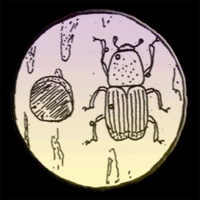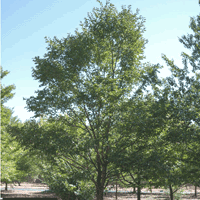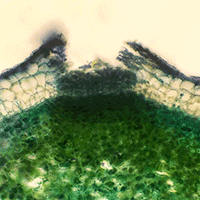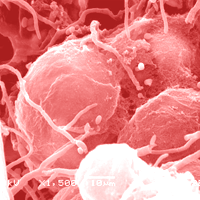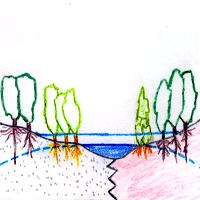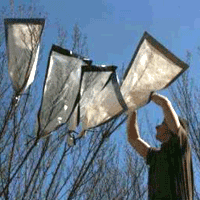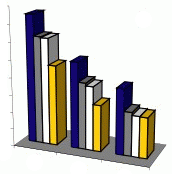
Avoidance by early flushing: a new perspective on Dutch elm disease research
L Ghelardini (1-2), A Santini (2)
iForest - Biogeosciences and Forestry, Volume 2, Issue 4, Pages 143-153 (2009)
doi: https://doi.org/10.3832/ifor0508-002
Published: Jul 30, 2009 - Copyright © 2009 SISEF
Review Papers
Abstract
European elms (Ulmus glabra Huds., Ulmus laevis Pall. and Ulmus minor Mill.) have been severely damaged and are still endangered by an alien hypervirulent pathogen, Ophiostoma ulmi s. l., agent of the Dutch elm disease (DED). Consequently, several ex situ clone collections have been established throughout Europe for elm breeding and conservation. In this paper we summarise the studies carried out within the EU project RESGEN CT96-78, which launched the EU-coordinated evaluation of these collections. Our aim was to analyse the variation in timing of bud burst and to acquire basic knowledge on the environmental control of this adaptive trait in European elms, under the hypothesis that DED susceptibility is related to spring phenology. The variation in the bud burst date of European elms among collections and years was explained by a phenological model assuming that the thermal time required for bud burst decreases exponentially with increasing chilling during winter down to a level where chilling requirement is fully met. According to the fitted curves, European elms have low dormancy and short chilling requirement for dormancy release. Although no simulation was performed, on the basis of the model applied we can hypothesise that under climate warming elms would flush earlier in most of Europe. The bud burst date was directly related to latitude and elevation in U. minor. The order of bud burst of clones from different origins was stable among years. The observed geographic trends were largely determined by differences in chilling requirements that increased with latitude and elevation. Susceptibility to DED varied greatly within U. minor and was directly correlated with geographic origin and bud burst date, southern and early flushing clones showing the least symptoms. Our results suggest that early flushing represents a mechanism of disease avoidance owing to asynchrony between host’s susceptible period and time of natural infection by DED vectors (Scolytus). This escape mechanism, combined with true resistance and avoidance owing to unattractiveness for the vector’s feeding, might be exploited for breeding DED-resistant clones of indigenous species.
Keywords
Bud burst phenology, DED, Disease escape, Elm, Ulmus, Growth-differentiation balance hypothesis
Authors’ Info
Authors’ address
Department of Plant Biology and Forest Genetics, Swedish University of Agricultural Sciences, Box 7080, S-750 07 Uppsala (Sweden)
A Santini
Istituto per la Protezione delle Piante - CNR, Via Madonna del Piano 10, 50019 Sesto Fiorentino, FI (Italy)
Corresponding author
Paper Info
Citation
Ghelardini L, Santini A (2009). Avoidance by early flushing: a new perspective on Dutch elm disease research. iForest 2: 143-153. - doi: 10.3832/ifor0508-002
Academic Editor
Marco Borghetti
Paper history
Received: Mar 02, 2009
Accepted: Jul 16, 2009
First online: Jul 30, 2009
Publication Date: Jul 30, 2009
Publication Time: 0.47 months
Copyright Information
© SISEF - The Italian Society of Silviculture and Forest Ecology 2009
Open Access
This article is distributed under the terms of the Creative Commons Attribution-Non Commercial 4.0 International (https://creativecommons.org/licenses/by-nc/4.0/), which permits unrestricted use, distribution, and reproduction in any medium, provided you give appropriate credit to the original author(s) and the source, provide a link to the Creative Commons license, and indicate if changes were made.
Web Metrics
Breakdown by View Type
Article Usage
Total Article Views: 90088
(from publication date up to now)
Breakdown by View Type
HTML Page Views: 78123
Abstract Page Views: 5032
PDF Downloads: 5734
Citation/Reference Downloads: 70
XML Downloads: 1129
Web Metrics
Days since publication: 6000
Overall contacts: 90088
Avg. contacts per week: 105.10
Citation Metrics
Article Citations
Article citations are based on data periodically collected from the Clarivate Web of Science web site
(last update: Mar 2025)
Total number of cites (since 2009): 34
Average cites per year: 2.00
Publication Metrics
by Dimensions ©
Articles citing this article
List of the papers citing this article based on CrossRef Cited-by.
References
Distribution by the sap stream of spores of three fungi that induce vascular wilt diseases of elm. Journal of Agricultural Research 62: 637-681.
Gscholar
Barrier zone formation as a resistance mechanism of elms to Dutch elm disease. IAWA Bulletin 6 (1): 71-77.
Gscholar
Inheritance of pathogenicity and cultural characteristics in Ceratocystis ulmi. Hybridisation of protoperithecial and non-aggressive strains. Transactions of the British Mycological Society 68: 45-52.
Gscholar
The future of Dutch elm disease in Europe. In: “Research on Dutch elm disease in Europe, 1982” (Burdekin DA ed). Forestry Commission Bulletin 60, pp. 96-104.
Gscholar
Intercontinental spread and continuing evolution of the Dutch elm disease pathogens. In: “The elms: breeding conservation and disease management” (Dunn CP ed). Kluwer Academic Publisher, Boston, USA, pp. 61-72.
Gscholar
The role of hybridisation in gene conservation. In: “Noble Hardwoods network: Report of the fourth and fifth meetings” (Borelli S ed). International Plant Genetic Resources Institute, Rome, pp. 50-67.
Gscholar
Strategies and guidelines for the conservation of the genetic resources of Ulmus spp. In: “Noble Hardwoods network: Report of the fourth and fifth meetings” (Borelli S ed). International Plant Genetic Resources Institute, Rome, pp. 50-67.
Gscholar
Methods and progress in the conservation of elm genetic resources in Europe. Investigación agraria: Sistemas y Recursos Forestales 13 (1): 261-272.
Gscholar
Attack response of the smaller European elm bark beetle, Scolytus multistriatus, in confinement. Journal of Economic Entomology 57 (1): 170-172.
Gscholar
The elms: breeding, conservation and disease management. Kluwer Academic Publishers, Boston, USA.
Gscholar
Susceptibility and possible mechanisms of resistance to Dutch elm disease. In: Proceedings of the “Dutch elm disease symposium and workshop” (Kondo ES, Hiratsuka Y, Denyer WBG eds). Winnipeg (Manitoba - Canada), 5-9 October 1981, pp. 169-177.
Gscholar
Hydraulic conductivity in trunk xylem of elm, Ulmus americana. IAWA Bulletin 6: 303-307.
Gscholar
Bud burst phenology, dormancy release and susceptibility to Dutch elm disease in elms (Ulmus spp.). Doctoral thesis no. 2007:134, Acta Universitatis Agriculturae Sueciae, Uppsala, Sweden, pp. 52.
Gscholar
Elms: past, present, and future In: Proceeding of the “National conference on wilt diseases of shade trees” (Ash CL ed), St. Paul, Minnesota (USA), 25-28 August 1999. APS Press, pp. 29-36.
Gscholar
Genetic and seasonal variation in hardiness and growth rhythm in boreal and temperate conifers - a review and annotated bibliography. SkogForsk, Report No. 2, pp. 144.
Gscholar
A framework for modelling the annual cycle of trees in boreal and temperate regions. Silva Fennica 41 (1): 167-205.
Gscholar
The Dutch elm breeding program. In: “Dutch elm disease research: cellular and molecular approaches” (Sticklen MB, Sherald JL eds). Springer-Verlag, New York, USA, pp. 16-25.
Gscholar
Climate change 2007: synthesis report. Core Writing Team (Pachauri RK, Reisinger A eds). IPCC, Geneva, Switzerland, pp. 104.
Gscholar
Calculating chilling hours and chill units from daily maximum and minimum temperature observations. HortScience 25 (1): 14-16.
Gscholar
Growth-differentiation balanca: a basis for understanding southern pine beetle-tree interactions. Forest Ecology and Management 14: 259-273.
Gscholar
Water relations in American Elm infected with Ceratocystis ulmi. Phytopathology 63 (1): 98-103.
Gscholar
Sink strength as a determinant of dry matter partitioning in the whole plant. Journal of Experimental Botany 47: 1281-1291.
Gscholar
Hybridization studies in the Eurasian species of elm (Ulmus ssp.). Silvae Genetica 40: 237-243.
Gscholar
The history of elm breeding. Investigación agraria: Sistemas y Recursos Forestales 13: 161-177.
Gscholar
Twig inoculations on American elm with Ceratocystis ulmi. Phytopathology 58: 1566-1570.
Gscholar
Anatomical and physiological aspects of resistance to Dutch elm disease. In: “Defense mechanisms in woody plants against Fungi” (Blanchette A, Biggs R eds). Springer-Verlag, Berlin, pp. 257-305.
Gscholar
Ultrastructural and cytochemical studies of host and pathogens in some fungal wilt diseases: retro- and introspection towards a better understanding. Investigación agraria: Sistemas y Recursos Forestales 13 (1): 119-145.
Gscholar
Ultrastructure of the alveolar network and its relation to coating on vessel walls in elms infected by Ophiostoma novo-ulmi and in other plants affected with similar wilt diseases. Investigación agraria: Sistemas y Recursos Forestales 13 (1): 147-160.
Gscholar
Elm breeding for resistance against bark beetles. Investigación agraria: Sistemas y Recursos Forestales 13 (1): 207-215.
Gscholar
Some studies on the Dutch elm disease and the causal organism. Doctoral Thesis, Cornell University, Ithaca (NY), USA.
Gscholar
Cerato-ulmin: a unique wilt toxin of instrumental importance in the development of Dutch elm disease In: “Dutch elm disease research: cellular and molecular approaches” (Sticklen M, J. Sherald J eds). Springer Verlag, New York, USA, pp. 89-151.
Gscholar
Compartmentalization in trees: new findings during the study of Dutch elm disease. In: “Histology, ultrastructure and molecular cytology of plant-microorganism interactions” (Nicole M, Gianinazzi-Pearson V eds). Kluwer Academic, Dordrecht, The Netherlands, pp. 211-225.
Gscholar
Preference of Scolytus multistriatus (Marsham) during the gonad maturation phase between two species of elm. Redia 73: 347-354.
Gscholar
Resistance of Himalayan small-leaved elm to Dutch elm disease. Journal of Arboriculture 5: 110-112.
Gscholar
Vegetative bud-burst variability of European elms. In: “New approaches to elm conservation”. Proceedings of the 2nd International Elm Conference, Valsaìn (Spain) 20-23 May 2003. Investigatión Agraria: Sistemas y Recursos Forestales 13 (1): 37-45.
Gscholar
Significance of bark beetles (Col. Scolytidae) in the spread of the Dutch Elm Disease in the area of Euskirchen. Journal of Applied Entomology 98 (4): 413-423.
Gscholar
Dutch elm disease: a CODIT perspective In: Proceedings of the “Dutch elm disease symposium and workshop” (Kondo ES, Hiratsuka Y, Denyer WBG eds). Winnipeg (Manitoba - Canada) 5-9 October 1981, pp. 151-168.
Gscholar
Compartmentalization of America elm tissues infected with Ceratocystis ulmi. Plant Disease 65: 715-718.
Gscholar
Dutch elm disease, perspectives after 60 years. Cornell University Agricultural Experiment Station, Search (Agriculture) 8: 1-52.
Gscholar
Seasonal fluctuations in susceptibility of young elm seedlings to Dutch elm disease. Phytopathology 53: 846-853.
Gscholar
Asian elms: source of disease and pest resistance In: “The elms: breeding, conservation, and disease management” (Dunn C ed). Kluver Academic Publishers, Boston, USA, pp. 215-230.
Gscholar
Seasonal variation in the resistance of various elm species to Dutch elm disease. In: “Breeding pest-resistant trees” (Gerhold HD, Schreiner EJ, Mc Dermott RE, Winieski JA eds). Pergamon Press, Elmsford, NY (USA), pp. 279-292.
Gscholar
Screening European elms for resistance to Ophiostoma novo-ulmi. Forest Science 51 (2): 134-141.
Gscholar
Molecular and cellular aspects of Dutch elm disease. Phytoprotection 72: 1-13.
Gscholar
Compendium of elm diseases. American Phytopathological Society, St. Paul, MN (USA), pp. 66.
Gscholar
The influence of temperature and light on defoliation levels of elm by Dutch elm disease. Epidemiology 87 (6): 576-581.
Gscholar
Methods for screening and for the rapid selection of elms for resistance to Dutch elm disease. Acta Botanica Netherlandica 14: 409-452.
Gscholar
Relative resistance of diploid Ulmus species to Ceratocystis ulmi. Plant Disease Reporter 55: 980-982.
Gscholar
Little-known elms from China: landscape tree possibilities. Journal of Arboriculture 21: 284-288.
Gscholar
Insect vector behaviour and the evolution of Dutch elm disease. In: “The elms: breeding, conservation and disease management” (Dunn CP ed). Kluwer Academic Publishers, Boston, USA, pp. 47-60.
Gscholar
Experimental studies on factors influencing the transmission of Dutch elm disease. Investigación agraria: Sistemas y Recursos Forestales 13 (1): 197-205.
Gscholar
The transmission of Dutch elm disease: a study of the process involved. In: “Invertebrate-microbial interactions” (Anderson JM, Rayner ADM, Walton D eds). Cambridge University Press, Cambridge, UK, pp. 271-306.
Gscholar
Within and between populations variation in adaptive traits in Ulmus laevis Pall., the European white elm. Forest Genetics 10 (4): 313-323.
Gscholar
Dysfunction in the flow of food. In: “Plant disease - an advanced treatise. Vol III. How plants suffer from disease” (Horsfall JG, Cowling ED eds). Academic Press, New York, USA, pp. 117-140.
Gscholar
Hybridization and introgression patterns between native red elm (Ulmus rubra Muhl.) and exotic, invasive Siberian elm (Ulmus pumila L.) examined using species-specific microsatellite markers. In: Proceedings of “CONGEN3: The Third International Conservation Genetics Symposium”, New York (USA) 27-29 September 2007, pp. 20.
Gscholar

